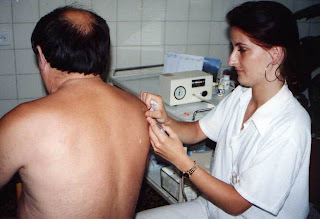Everything about Botox Injections to keep you young and beautiful
Botox Injections: What You Need To Know
by Clare HudsonHow Botox Works
Botox works by blocking the release of a chemical messenger (neurotransmitter) which is formally known as acetylcholine. This neurotransmitter found in the nerve cells usually transmits a nerve impulse to a muscle cell and causes it to contract. With the absence of acetylcholine the muscle cell is weakened leading to paralysis of the muscle. The Botox injection is restricted to the area under treatment simply because the effect is temporary and the nerve fibers have the capability of regenerating after a few months.
The use of Botox Injections

They are used to treat various medical conditions that include:
• Muscle spasms in the face or other localized area
• Twitching of the eyelid (blepharospasm)
• Muscle spasticity
• Muscle spasms in the neck (cervical dystonia) and
• Proper alignment of the eyes (strabismus)
Botox injections are also used to reduce excessive underarm sweating. This is done by blocking the action of the nerve cells that control the sweat glands. By being injected directly on the underarms they can treat localized hyperhidrosis.
In cosmetics treatments they are used to treat the vertical frown lines which are referred to as glabellar lines. These are found between eyebrows and are caused by the contraction of muscles when one frowns, squints or concentrates. Other lines such as crows feet (lines found at the corner of the eyes) and horizontal lines at the forehead can also be treated with Botox injections.
How Botox Injections Treat Wrinkles
Botox injections treat wrinkles on the face by weakening or causing paralysis of the muscles found on the face and pulling the skin. After about a week after the injections, the wrinkles and lines start disappearing. However this does not limit one from forming facial expressions.
The Lasting Period
After the injections and the disappearance of the wrinkles and lines, one can have an improved appearance for up to 6 months before having the treatment repeated. However with continued use, the effects of the injections last longer.
A number of patients who use the Botox injections end up developing antibodies that neutralize the effect of the injections resulting to ineffective treatment. This only happens when they repeatedly use the treatment.
How safe are Botox Injections?
 When administered by medical professionals with a lot of experience in the treatment, the Botox injections are quite safe. There are some mild and temporary side effects are associated with the treatment. These include pain, bruising and tenderness associated with the Botox injection. It is common for most people to experience a slight headache right after the treatment is administered. Others also experience nausea and flu syndromes.
When administered by medical professionals with a lot of experience in the treatment, the Botox injections are quite safe. There are some mild and temporary side effects are associated with the treatment. These include pain, bruising and tenderness associated with the Botox injection. It is common for most people to experience a slight headache right after the treatment is administered. Others also experience nausea and flu syndromes.One of the significant side effects of the treatment is the risk of a drooping eye for a few days. Women who are pregnant or breastfeeding should avoid this treatment. Just like other medical treatments there are benefits and side effects that come with this treatment. It is important that you talk to your doctor to get all the facts right.
Where to get Botox Treatments
The cosmetic procedures can be performed by many types of health professionals. As a matter of fact, the Botox treatment should be administered by a medical professional with a lot of experience in the technique. A doctor should first let you know whether the treatment is good for you.




